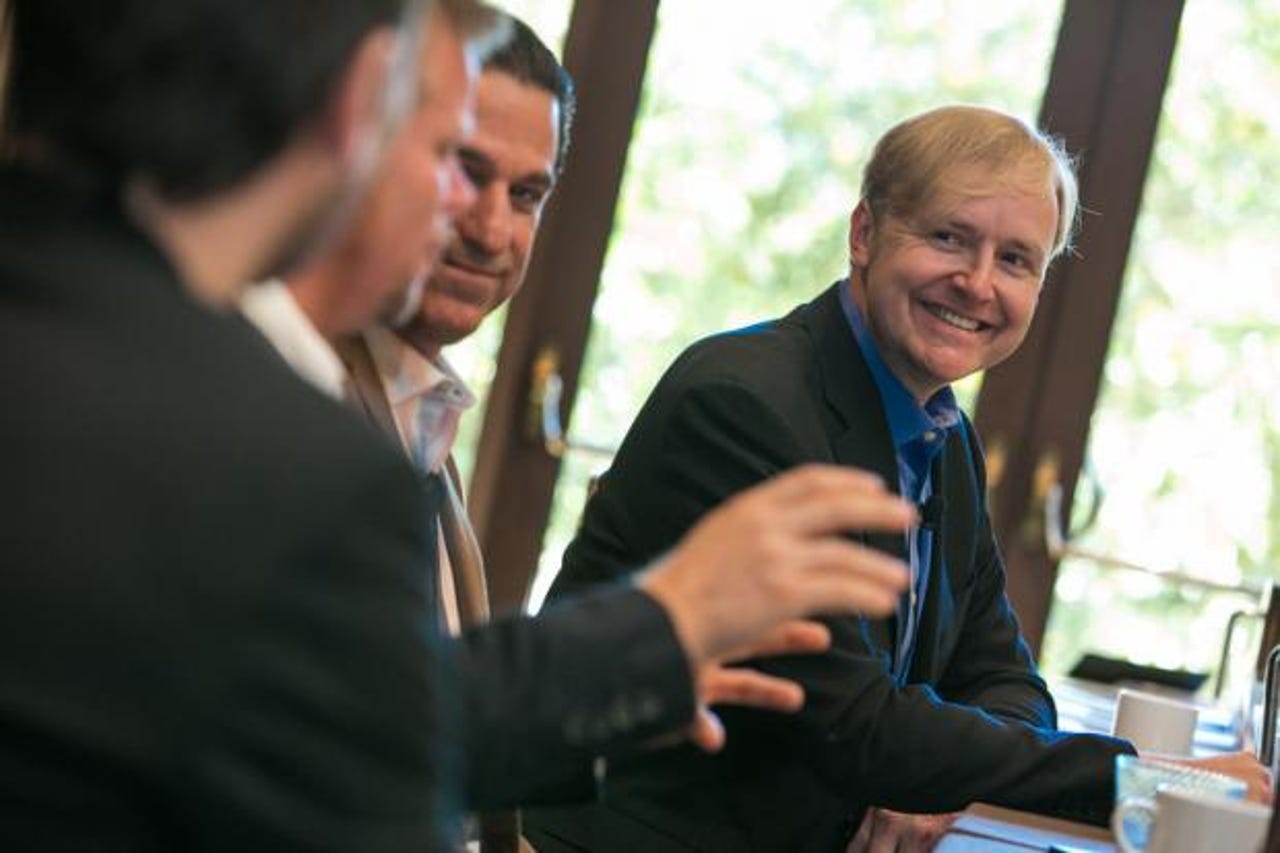The social enterprise: nine insights


MARANA, Calif. -- It's been a busy three days here at the Techonomy conference in Tucson, packed equally with amazing predictions for applied technology (that kind of stuff you can read on our sister site, SmartPlanet) and deep dives into business technologies.
On the final day today -- over a hot breakfast -- LinkedIn's Allen Blue, Citrix Podio's Jon Froda and Jive Software's Tony Zingale discussed the social enterprise: what it is (a new path to productivity) what it isn't (Facebook for work) and the shifts that are making it vitally important to businesses of all sizes (namely, e-mail overload).
It turns out that there's a better way to work -- one that decentralizes technology in an organization to empower individual employees. (Sorry, IT.)
All three made many, many points, but unlike most of the panel discussions here I had a breakfast burrito in hand, rather than a reporter's notebook.
Still, I scrawled down some very interesting comments. (If you follow me on Twitter, I tweeted them, too, using my smartphone.)
Here are nine of them:
1.) "E-mail and spreadsheets are powering the work of today."
That's Froda, explaining that a frightening amount of high-tech businesses are powered by tools that are ill-fitting for the tasks for which they are used. Is a spreadsheet attached to an e-mail sent to 25 people the best way to disperse information to a team? Absolutely not, yet here we are.
2.) "The conversation itself is the way work gets done in the enterprise."
That's Zingale. He preceded this statement by protesting the idea that social enterprise software is just Facebook for the workplace -- it's not at all. We can all agree that no one does any work on Facebook, he said. What the social enterprise is actually about is helping your employees work they way they want to work. (But not necessarily the way they always have been.)
3.) "Fifteen percent of all people searches on LinkedIn are for their own colleagues."
Here, Blue isn't just dropping an internal statistic to pat his company on the back but instead demonstrate that internal tools -- even the corporate directory! -- are often insufficient. When an employee finds a path with less friction, even if it's through a consumer product intended for another purpose, they will use it. LinkedIn has the data to prove it.
4.) "The number one reason people leave their organization is because they don't feel connected."
This is Zingale speaking about transparency. He touched on the Millennial angle a little bit -- us young folks want to know everything up and down the reporting chain -- but he really is making the point that internal tools are impeding communication within enterprises. Once they improve, amazing things can happen -- like News Corp. chief Rupert Murdoch calling an entry-level employee on his mobile phone to answer a question he left in an internal forum. That's culture-changing stuff.
5.) At work, "we don't want to CC: everyone on an e-mail, because it's rude. But we should. It's not a secret."
Building on Zingale's point above, Froda explains how ill-suited e-mail is to internal collaboration. You want to get information to your team, but other teams would be interested in knowing about it, too. But how do you convey that information in a push sense (rather than a "pull," go-and-find-it sense) without spraying everyone's inboxes and coming off rude? (Conversely, how do you keep everyone informed if you're polite and only send it to a handful of colleagues?) How do you give others the ability to observe your part of the company?
6.) "Users are people. No matter where they are, they're just people."
Here's Froda, repeating a long-held (but often ignored) maxim. His reason for saying it here: because your employees are your technology customers. They must be heard, and their use cases understood.
7.) "Every technology is a transitional technology. It's just a matter of what transition you're in the middle of."
This is Blue trying to get at the sensation of the ground constantly moving. Social enterprise technology would not have come along without e-mail and faxes and everything before it, and it's not the end of the road, either. The real destination is more productive work. Don't focus on the tool or even the process, just focus on the ability to get work done.
8.) As the power of the individual increases, company culture is going to be the single most important factor to success.
Blue, again. Top-down managed companies are on their way out. Bottom-up managed companies are surging. Large companies are hurting; small companies are thriving. The reason? The old command-and-control method of management is dying because employees are intelligent and empowered and come armed with technology knowledge and consumer tools. That spells doom for middle management that acts as a blocking mechanism but is a portent for potential for middle management that acts like an enzyme, pairing groups together for more productivity. Once the reporting structures and limiting technologies fall away, you're left facing one thing: ensuring that your employees embody a common mission.
9.) Your company should have a six- to 12-month plan and a 10-year plan. Nothing else matters.
Blue, paraphrasing (and slightly modifying) a statement made by another presenter at the conference. His point here is that you should be very clear about your company's mission and reason to be -- that's the 10-year part -- and very clear about the solutions to the problems you're working on right now (that's the 6-12 month part). The original presenter's statement cited a 20-year plan, but Blue believes that's too long a period of time; we simply can't predict that far out, technology will change too significantly. But we do know what's coming in a decade, so it shouldn't be a question as to how your company's employees need to function to get there.
Photo: Asa Mathat